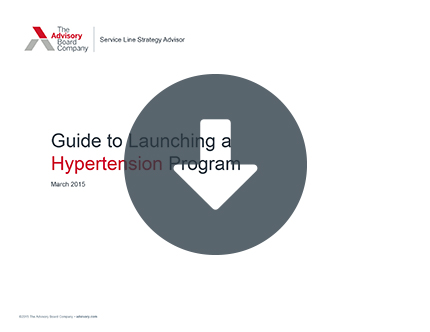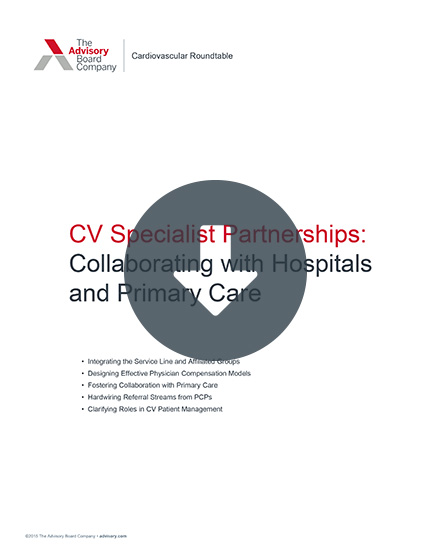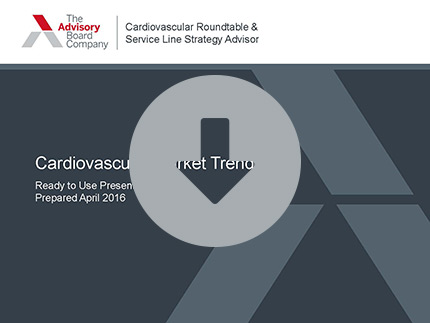Auto logout in seconds.
Continue LogoutPatients who have normal blood pressure readings at home and high blood pressure in the doctor's office, a condition called "white-coat hypertension," are at higher risk of heart disease and death if the condition goes untreated, according to a study published Monday in the Annals of Internal Medicine.
Slide deck: Stay up-to-date on trends in cardiovascular services
What is white-coat hypertension?
Research suggests that about one in five U.S. adults has white-coat hypertension, meaning that their blood pressure spikes when they are in a physician's office. While doctors are unsure what causes the condition, they believe it stems from patients' anxiety in a medical setting or from a fluctuation in blood pressure caused by an underlying condition.
To determine the risks associated with white-coat hypertension, researchers at the University of Pennsylvania Perelman School of Medicine conducted analyzed 27 studies involving more than 25,000 patients with untreated or treated white-coat hypertension and more than 38,000 patients with normal blood pressure across the United States, Asia, and Europe.
Untreated white-coat hypertension is not a benign condition
The analysis revealed that patients with untreated white-coat hypertension had more than double the risk of dying from a cardiovascular event, compared with people who have normal blood pressure.
Patients with untreated white-coat hypertension had a 36% increased risk of heart disease, the researchers found. They also had a 33% increased risk of death overall.
The researchers also looked at certain subgroups and found, when compared with people who have normal blood pressure, the risk of cardiovascular event and mortality increased when they looked at just older patients, when the study duration was at least five years, and when researchers used ambulatory blood pressure monitoring systems instead of home blood pressure monitoring systems.
However, when the researchers assessed risk for patients undergoing treatment for white-coat hypertension, they found no significant associations.
A 'really important' finding
In an accompanying editorial, Daichi Shimbo, a cardiologist and an associate professor of medicine at Columbia University Medical Center, and Paul Muntner, associate dean of research at the University of Alabama at Birmingham School of Public Health, wrote that the researchers' findings are "really important" because "for a long time, it's been thought that white-coat hypertension is benign and not associated with increased risk."
However, they noted the results also show that the risk associated with untreated white coat hypertension doesn't necessarily "apply to everyone," and illustrates the importance of home blood pressure monitoring. "Once people start blood pressure lowering medications, they're going to be on it for the rest of their lives, and so it's still useful to have the extra information on someone's blood pressure before asking them to take medication for the rest of their life," they wrote.
While the researchers conceded that more research is needed, they "encourage" patients with white-coat hypertension to implement certain "lifestyle modifications" in order to detect, track, and potentially treat their condition.
For example, Cohen said patients should "[l]earn how to take blood pressure" at home, either with a store-bought device or ambulatory monitoring, a special blood pressure cuff that takes patients' blood pressure throughout the day and night, so that they always "[k]now what [their] blood pressure is."
"People with white-coat hypertension may not be monitored regularly. They may feel like nothing is wrong," she said. She added, "I think everyone should have a home monitor, even if their health care provider doesn't specifically recommend it" (Hailu, STAT News, 6/10; Scutti, CNN, 6/10; Gordon, WebMD, 6/10).
What's trending in cardiovascular services?
Want the latest information for your next cardiovascular meeting? This ready-to-use presentation contains Advisory Board's most popular slides on cardiovascular market trends, from growth outlook and financial considerations to new care management priorities and technology innovations.
Use the slides to frame your next cardiovascular meeting and build a strong foundation for your presentation.
Don't miss out on the latest Advisory Board insights
Create your free account to access 1 resource, including the latest research and webinars.
Want access without creating an account?
You have 1 free members-only resource remaining this month.
1 free members-only resources remaining
1 free members-only resources remaining
You've reached your limit of free insights
Become a member to access all of Advisory Board's resources, events, and experts
Never miss out on the latest innovative health care content tailored to you.
Benefits include:
You've reached your limit of free insights
Become a member to access all of Advisory Board's resources, events, and experts
Never miss out on the latest innovative health care content tailored to you.
Benefits include:
This content is available through your Curated Research partnership with Advisory Board. Click on ‘view this resource’ to read the full piece
Email ask@advisory.com to learn more
Click on ‘Become a Member’ to learn about the benefits of a Full-Access partnership with Advisory Board
Never miss out on the latest innovative health care content tailored to you.
Benefits Include:
This is for members only. Learn more.
Click on ‘Become a Member’ to learn about the benefits of a Full-Access partnership with Advisory Board
Never miss out on the latest innovative health care content tailored to you.



